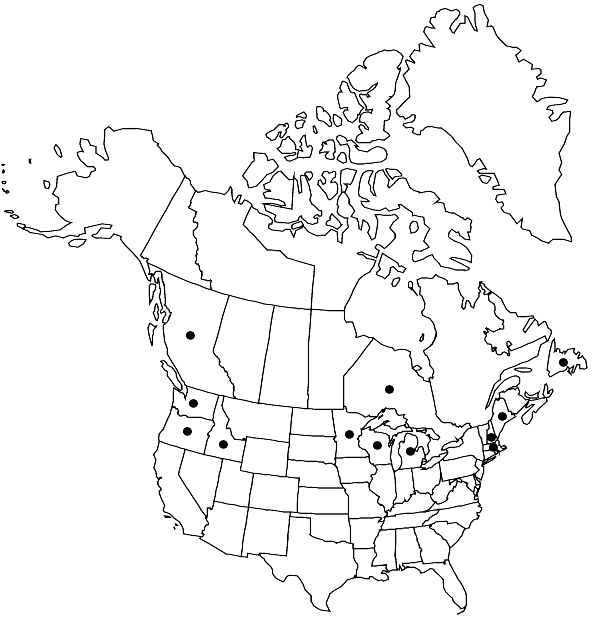Grimmia muehlenbeckii
Syn. Musc. Eur., 212. 1860,.
Plants in blackish green tufts. Stems 1–2.5 cm, central strand present. Leaves loosely appressed, twisted when dry, erectopatent when moist, ovatelanceolate, tapering to acute apex, 2–3 × 0.6–0.8 mm, keeled, margins recurved in mid leaf on both sides, awns short, denticulate, in perichaetial leaves stout and often decurrent, costa channeled distally, projecting at abaxial side, angled to bluntly winged; basal juxtacostal laminal cells short to long-rectangular, yellowish, nodulose, thick-walled; basal marginal laminal cells short-rectangular with thickened transverse walls; medial laminal cells quadrate to short-rectangular, sinuose, thick-walled; distal laminal cells 1-stratose with 2-stratose ridges, margins 2-stratose. Gemmae rare, in clusters, short-stalked, in distal leaf-axils. Sexual condition dioicous. Seta arcuate, 2–3 mm. Capsule occasionally present, exserted, globose, shiny, brown, smooth to slightly striate, exothecial cells thin-walled, annulus present, operculum rostrate, peristome teeth purple, fully-developed or slightly split distally, papillose. Calyptra mitrate.
Habitat: Shaded acidic rock, often along lakes
Elevation: moderate to high elevations (200-2000 m)
Distribution

B.C., Nfld. and Labr. (Nfld.), Ont., Idaho, Maine, Mass., Mich., Minn., N.H., Oreg., Wash., Wis., Europe, e Asia (Japan), Africa (South Africa)
Discussion
Grimmia muehlenbeckii is closely related to G. trichophylla, and in the past it was frequently regarded as a subspecies or variety of that taxon. H. Deguchi (1978) treated it as a distinct species, followed by A. J. E. Smith (1992). Greven agrees with those treatments. He has seen many specimens that are remarkably uniform and easy to distinguish from G. trichophylla by their small, globose, shiny, dark brown capsules with purple, entire peristome teeth. In contrast, the capsules in G. trichophylla are oblong-ovoid, larger and longer than in G. muehlenbeckii, dull, yellowish brown, and the peristome teeth are orange and cleft. The gametophyte differs from that of G. trichophylla by its blackish green tufts, angled costa with blunt wings protruding on the abaxial side, and ovate-lanceolate leaves with stout, denticulate awns that are often decurrent.
Selected References
None.